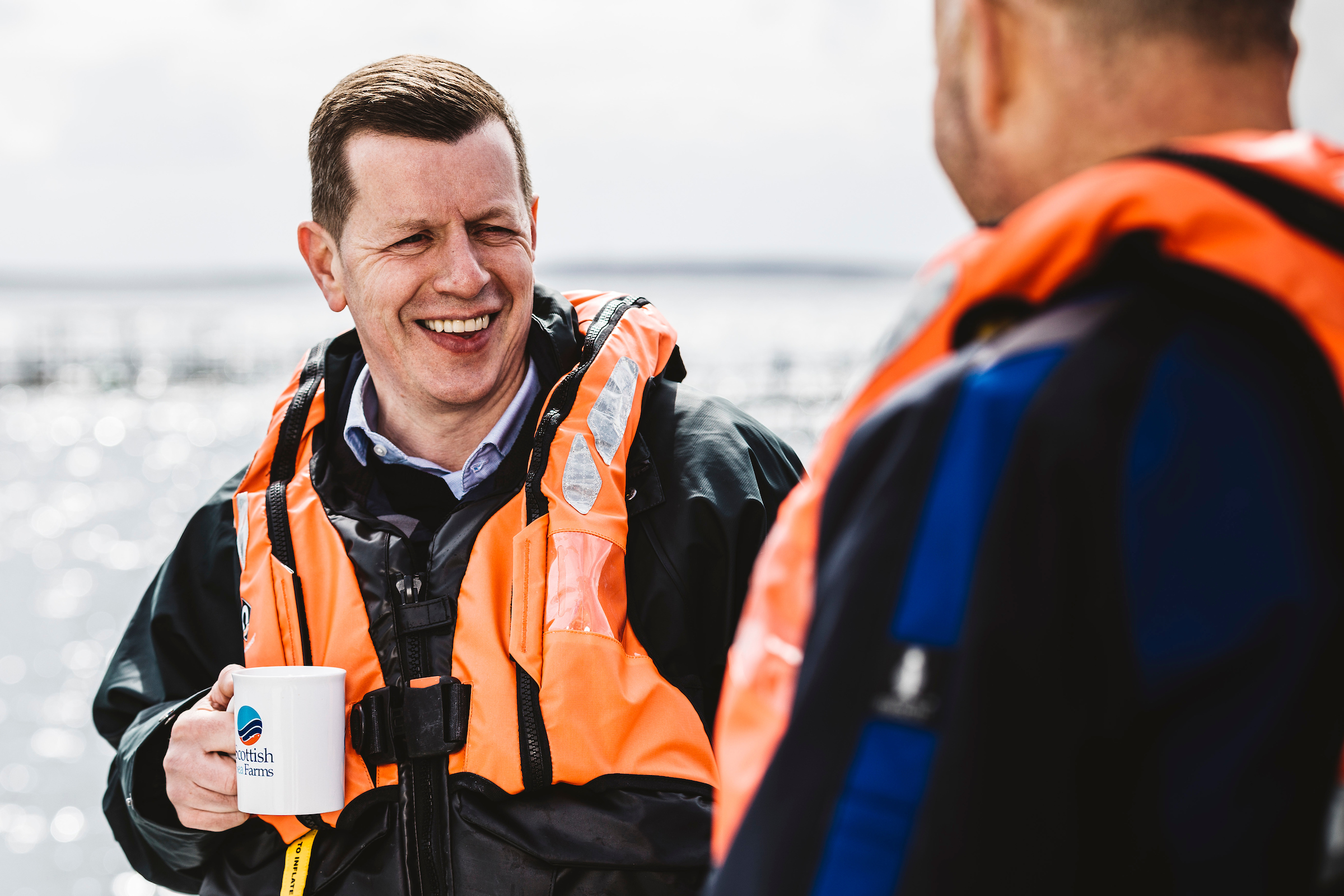SalMar reports profits up for Q3 2020

Fish farming giant SalMar has delivered exceptionally strong third quarter results, with a better than anticipated performance from its associate business Scottish Sea Farms, in which it has a 50 per cent share with Leroy Seafood.
In what has been toughest quarter yet for salmon farmers, the group today announced an operational EBIT of NOK 646.8 million (£54 million), up from NOK 613.5 million (£51 million) a year ago.
CEO Gustav Witzøe was in bullish mood, saying: “Fantastic efforts from our employees over time makes it possible for SalMar to once again deliver strong quarterly results. Good strategic assessments and a clear operational focus have led to strong biological and operational performance throughout the entire value chain. This has resulted in good capacity utilization, good cost development and solid price achievement with associated margins. This in a period of increased uncertainty both for employees and in the market caused by the Covid-19 pandemic.”
SalMar is also one of the few salmon companies paying a dividend this quarter, proposing a figure of NOK 13 per share.
Commenting on the results, Scottish Sea Farms’ managing director Jim Gallagher said: “2020 has brought challenges that no business could have anticipated, with Covid-19 impacting on the day-to-day running of our farms and our many support services. However, as the Q3 results show, we have adapted to, and withstood, these challenges well, delivering strong fish health and performance and maintaining deliveries to our customers.”
Scottish Sea Farms – or Norskott Havbruk as SalMar calls the business – seems to have turned the corner from the biological problems of earlier periods. Operating revenues were down from NOK 630 million (£52.5 million) to NOK 543 million (£45 million) due to lower harvests this quarter.
SalMar said: “Good growth and biological performance in all regions resulted in lower costs compared with the previous quarter. Operational EBIT per kg gutted weight came to NOK 12.45, compared with NOK 2.69 per kg in the same period last year. Sales in the spot market accounted for 59 per cent of the volume harvested. Here, price achievement was negatively affected by the market uncertainty caused by the Covid-19 pandemic. The remaining volume was sold under contract at an achieved price higher than the spot price.”
Pre-tax profits from Scottish Sea Farms totalled NOK 114 million (£9.5 million) compared to a loss of NOK 103 million in the same period a year ago. SalMar’s share of the profit (after tax) is NOK 46 million (£3.8 million).
The Q3 harvest volume was 8,100 tonnes, down from 10,000 tonnes in Q3 2019, but up from 6,500 tonnes on the previous (Q2) quarter.
Norskott Havbruk says it expects to harvest 26,000 tonnes this year and a much higher figure of 36,000 tonnes in 2021.
At a group level SalMar generated gross operating revenues of just over NOK 2.9 billion in the quarter, up from just under NOK 2.8 billion on the third quarter last year. The Group harvested 37,100 tonnes of salmon in the quarter, compared with 35,800 tonnes in the corresponding period last year. Operational EBIT per kg came to NOK 17.46, up from NOK 17.12 per kg in the third quarter of 2019. The increase was achieved despite the average spot price for salmon (NASDAQ Salmon Index) during the period being NOK 2.08 per kg lower than in the same period last year.
The company said: “The Fish Farming Central Norway segment once again posted a strong result, and is reaping the rewards of operational efficiency and a good biological performance. The bulk of the volume harvested in the quarter came from the spring-2019 generation, which has now been completely harvested out. This generation has performed very well biologically. The remaining volume harvested came from the autumn-2019 generation, which has also performed well biologically. The segment will continue harvesting this generation in the fourth quarter. In the fourth quarter, the segment expects to harvest a significantly lower volume, with production costs on a par with the third quarter.
“Fish Farming Northern Norway segment also posted a good operating profit in the period. The entire volume harvested was made up of fish transferred to sea farms in the spring of 2019. This generation has developed very well biologically in recent periods. However, the segment’s result was somewhat affected by low price achievement, because harvesting took place in September when prices were at lowest. The segment will continue to harvest the spring-2019 generation in the fourth quarter. It expects similar production costs but a significantly higher harvested volume than in the third quarter.
“As expected, the third-quarter result for Icelandic Salmon (formerly Arnarlax) was weak. The result was affected by weak price achievement and high production costs for the 2018 generation that was harvested during the period. In the fourth quarter, the segment will start harvesting the 2019 generation, which has performed better biologically and with a lower cost level.”

